Advanced Editing With AvsP

At its heart AvsP is basically a fancy text editor. As you're typing your script you will find a number of advanced features to take advantage of. These features include Calltips and Autocompletion to assist in the script writing process. Calltips are AvsP's name for special hints that appear when you're typing. The text you're typing is analyzed in realtime to see if it matches any of the built-in Avisynth filters or pluigns that AvsP has information on. If there's a match it will appear in a dropdown list which you can select it from rather than typing the entire filter name. Once you have the filter's name (and opening parentheses) in your script you'll generally see a Calltip. Calltips show you the syntax for the filter you're adding, making it easier to remember what information needs to be included and how AviSynth expects it.
Automating Script Creation
If all you need to do is simple editing, such as cutting out frames or resizing before encoding the video, you may not ever have to learn anything about scripting at all. Instead you can use tools in AvsP to write the script for you. While the script is there, when you use AvsP's GUIs for various filters it will write the appropriate lines for you. Loading source files is as simple as pressing the F9 key and browsing to the video or audio file. The Crop Editor and Trim Editor on the Video menu provide GUIs for AviSynth's basic editing filters. The Resize Calculator on the Tools menu helps you change the video's resolution while keeping the proper aspect ratio.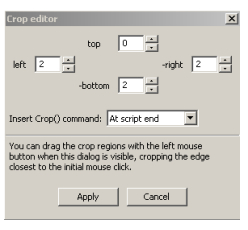
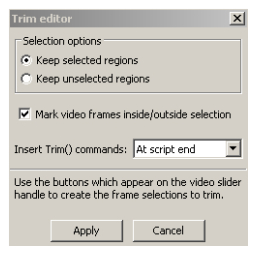
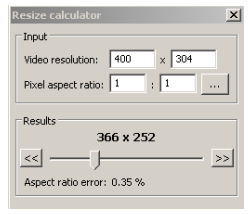
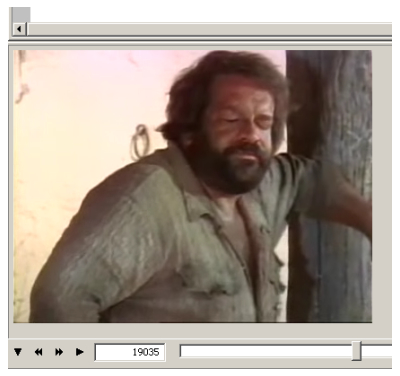
Previewing Scripts
Scripts can be previewed in AvsP by using either the built in viewer or an external program of your choosing. I recommend using the internal viewer for most previewing, but I still use VirtualDub because it includes features like saving the audio stream as a separate file. You'll have to tell AvsP the location of your external preview program in the Options dialog (see the previous section). You can also use AvsP's built-in preview window. This is particularly useful if you want to view the output every time you add or change a line. Simply press the F5 key on your keyboard to update the preview with the current script. Below the Preview are some basic controls, a field with the current frame number, which you can also input a frame number into to preview that frame. Finally there's a slider at the bottom that can be used to navigate through the video.
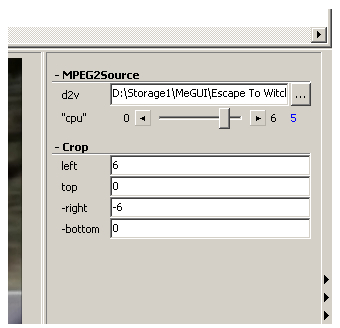
Slider Pane
As you add certain filters, AviSynth will put entries on the Slider pane to help you make changes later. The slider pane is to the right of the internal Preview area. If it's not already visible, make sure you have an active prevew and look for three arrows to the right of it. Click them and the Slider pane will appear. The slider pane gives you access to arguments for various filters in your script by providing slider bars, file selection dmade inialogs and simple text fields. Rather than changing settings manually in your script you can use the controls in the Slider pane to make quick adjustments. Unlike the text editor, changes made in the Slider pane are automatically reflected in the built-in preview.

